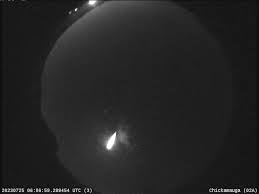The peak of the highly anticipated Perseid meteor shower is almost upon us, promising a dazzling celestial display that captures the hearts of sky gazers across the northern hemisphere. If you’re still unsure about your plans for this cosmic event, fret not. This last-minute guide will equip you with all the essential information you need to make the most of the 2023 Perseid meteor shower’s peak.

Mark Your Calendar: The Timing of the Perseid Meteor Shower
The nights of Saturday, August 12, and Sunday, August 13, 2023, are the dates to remember for the peak of the Perseid meteor shower. It’s advisable to keep a watchful eye on the night sky during all hours of darkness. However, the hours after midnight offer a slightly higher chance of witnessing the mesmerizing streaks of “shooting stars” per hour.
Perfect Conditions: The Unique Appeal of This Year’s Perseid Meteor Shower
This year’s Perseid meteor shower holds a special allure due to the absence of a bright moon during its peak nights. This absence ensures naturally dark skies and optimal viewing conditions, provided clear weather prevails in your location. While a waning crescent moon will rise a couple of hours before sunrise, its subdued illumination is unlikely to hinder your meteor shower experience. This month’s New Moon on August 16 further enhances the ideal conditions for a breathtaking viewing experience.
Diana Hannikainen, the Observing Editor at Sky & Telescope, emphasizes the exceptional conditions of this year’s event. She notes that the waning crescent moon, which is only 8% illuminated, rises in the early morning hours of August 13, sparing viewers from any interference. Hannikainen underscores that the main potential hindrances are cloud cover or the glow of light pollution.
Optimal Timing: When to Witness the “Shooting Stars”
For those seeking the full brilliance of the meteor shower, the peak night is scheduled for August 12-13, 2023. The meteor activity is expected to culminate sharply at 04:00 Universal Time on Sunday, August 13. To align this with various time zones:
12:00 a.m. EDT on Sunday, August 13.
11 p.m. CDT on Saturday, August 12.
10 p.m. MDT on Saturday, August 12.
9 p.m. MST/PDT on Saturday, August 12.
However, the true determining factor is darkness. The period between 10 p.m. and 4 a.m. provides the optimal dark conditions, regardless of your location. The likelihood of witnessing falling stars is also elevated when the constellation Perseus graces the darkest section of the sky, usually after midnight.
For those with limited time, focusing on around 2 a.m. on Sunday, August 13, is recommended. Yet, catching sight of “Earthgrazers,” meteors with elongated trails that seem to skim the atmosphere’s upper layers, is particularly captivating just after sunset.
Embrace the Vastness: Where to Witness the Perseids
While the radiant point of Perseid meteors lies in the northeastern night sky from the perspective of the northern hemisphere, their radiant brilliance can illuminate any part of the celestial dome. Given the relatively short trails these meteors leave behind, it’s best to observe about 30-40º away from the radiant point, following advice from the Society for Popular Astronomy.
Prime Viewing Locations: Seeking Darkness
For an unparalleled Perseid meteor shower experience, escape the clutches of light pollution. Whether you find yourself in an International Dark Sky Place, Dark-Sky Preserve (Canada), or Starlight Reserve (Spain), or simply in a rural area with minimal artificial lighting, you’re on the right track. For those making last-minute plans, a spontaneous camping trip may be a perfect choice to fully immerse yourself in the night sky’s splendor. Given the popularity of this event, booking ahead is wise to secure your spot among the many enthusiasts seeking to witness the magic of “shooting stars” this weekend.
Unfiltered Splendor: Naked Eyes and Wide Skies
Appreciating the Perseids requires no special equipment—no telescopes or binoculars needed. It’s an event meant to be witnessed with unaided eyes. Find a serene spot with a vast expanse of sky—be it a field, meadow, golf course, or a tranquil campsite. Whether you’re sprawled on a blanket, seated in a lawn chair, or indulging in an outdoor hot tub, keep your gaze fixed on the heavens.
As the Perseid meteor shower graces the skies, remember that the universe is putting on a grand performance for those who dare to look up. Armed with this last-minute guide, seize the opportunity to become a witness to this extraordinary cosmic event and bask in the ethereal beauty of falling stars.


